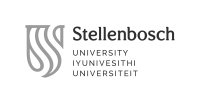People, Networks and Systems in the light of Sustainable Management
Professors
Schedule
Course description
Being a sustainable company requires the ability to manage people by fostering creativity and innovation; to collaborate in value networks to generate holistic value; and to constantly consider the ‘big picture’, with the environment and society as the main stakeholders.
The course will start with some activities to value sustainability, equity and nature; then, the role of organizational culture in realizing sustainability will be explored.
Concepts such as empowerment, leadership, diversity, collaboration, inclusion, creativity, organisational learning and learning organisation will be presented, highlighting how these can be interpreted in order to realise a sustainable company. Practical examples and classroom activities will be realized.
Next, the course will highlight the role of value networks to generate sustainable value. Different concepts will be explored to clarify how to manage the supply chain, value chain and networks in a sustainable and circular manner. In this context, also the role of consumers will be clarified. The shadows of current supply chains, such as fast-fashion or food chains, will be discussed. The role of digital technologies will be studied as well as the importance of reliable and traceable data to support sustainability among the multiple actors involved in sustainable value generation.
Teaching cases will be used to support the understanding and study of this part of the course, with a focus on critical thinking and problem framing.
The course will then delve into systems, starting with the concept of systems thinking. After understanding what systems are and how to know and understand them, the course will highlight the role of policies in activating innovative dynamics to achieve sustainability. To foster future literacy and political agency, students will be involved in the analysis of policies and laws with the aim of predicting their potential impact on the various components of sustainable management. Finally, the course will focus on the importance of assessing impacts to ensure the sustainability of the system and how this can be done. Metrics, tools and strategies for assessing and managing outcomes and impacts will be explained. Students will engage in a project-based activity that will require them to consider potential rebound effects and explore metrics and strategies to evaluate the outcomes and impacts of a specific sustainable innovation.
Learning outcomes
At the end of the course the students:
1) should demonstrate knowledge and understanding in challenges and practices of sustainable management;
2) could apply their knowledge and understanding in different types of organizations to achieve sustainability and positive impact at system level;
3) should have the ability to navigate through complex issues adopting innovative approaches and tools;
4) could communicate information, ideas, problems and solutions to both specialist and non-specialist audiences;
5) should have developed those learning skills that are necessary for them to continue to undertake more advanced courses or further study with a high degree of autonomy.
Teaching methods
The course includes a variety of teaching methods: from traditional lectures and seminars to cooperative learning, case-based learning, project-based learning and discussions. By leveraging the diverse experiences and perspectives of participants, this course aims to create a dynamic learning environment where participants can exchange ideas, challenge assumptions, and co-create solutions to contemporary management challenges.
Evaluation methods
10 % participation during seminars (debate, analysis of the documents, etc.) 50% Project-Based Activity (Group Work activity)
40 % Business case analysis (Individual activity)
Bibliography
Atasu, A., Dumas, C., & Van Wassenhove, L. N. (2021). The circular business model. Harvard Business Review, 99(4), 72-81.
Chatterji, A. K., & Toffel, M. W. (2019). Assessing the impact of CEO activism. Organization & Environment, 32(2), 159-185.
Chesbrough, H. W., & Appleyard, M. M. (2007). Open innovation and strategy. California management review, 50(1), 57-76.
Crane, A., Palazzo, G., Spence, L. J., & Matten, D. (2014). Contesting the value of “creating shared value”. California management review, 56(2), 130-153.
Crossan, M. M., Lane, H. W., & White, R. E. (1999). An organizational learning
framework: From intuition to institution. Academy of management review, 24(3), 522-537.
Freeman, R. E., & Dmytriyev, S. (2017). Corporate social responsibility and
stakeholder theory: Learning from each other. Symphonya. Emerging Issues in Management, (1), 7-15.
Friedman, M. (2007). The social responsibility of business is to increase its profits. In Corporate ethics and corporate governance (pp. 173-178). Berlin, Heidelberg: springer berlin heidelberg.
Greenwood, R., Raynard, M., Kodeih, F., Micelotta, E. R., & Lounsbury, M. (2011). Institutional complexity and organizational responses. Academy of Management annals, 5(1), 317-371.
Grewatsch, S., Kennedy, S., & Bansal, P. (2023). Tackling wicked problems in
strategic management with systems thinking. Strategic Organization, 21(3), 721-732. Harrison, S. H., Rouse, E. D., Fisher, C. M., & Amabile, T. M. (2022). The turn toward creative work. Academy of Management Collections, 1(1), 1-15.
Hopkins, M. S. (2009). What executives don't get about sustainability (and further notes on the profit motive). MIT Sloan management review51(1), 35.
Porter, M. E., & Kramer, M. R. (2011). Creating shared value: Redefining capitalism and the role of the corporation in society. Harvard Business Review, 89(1/2), 62-77. Raelin, J. A. (2023). Leadership-as-Practice: Its Past History, Present Emergence, and Future Potential. Academy of Management Collections, 2(2), 19-30
Wasserbaur, R., Sakao, T., & Milios, L. (2022). Interactions of governmental policies and business models for a circular economy: A systematic literature review. Journal of Cleaner Production, 337, 130329
Yunus, M., Moingeon, B., & Lehmann-Ortega, L. (2010). Building social business models: Lessons from the Grameen experience. Long range planning, 43(2-3), 308- 325.
Last updated: January 29, 2025


















